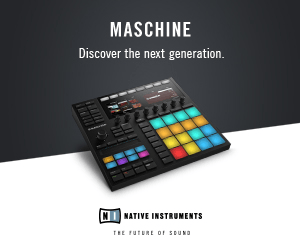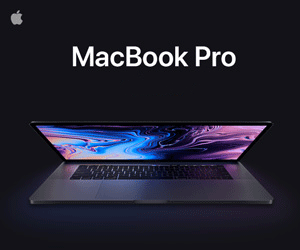Uniqueness Should Be Valued
As it says in the title uniqueness should be valued. Some of musics best artists are the ones who are the most unique. This video has to do with the instrument of the voice, but of course there is uniqueness to be discovered in all of the facets of music creation. I wanted to pass this video along as someone shared this with me. It is actually an interesting story as this video got to me through the internet, but not in the usual way. I actually went on a date with someone and got to talking about music and they eventually put me on this video. I ended up on that date through a dating site which I ended up on through checking out hookupdatingreviews. So this is to say, you never know the source when it comes to the sharing of music, but the internet intersects music with so many different things.
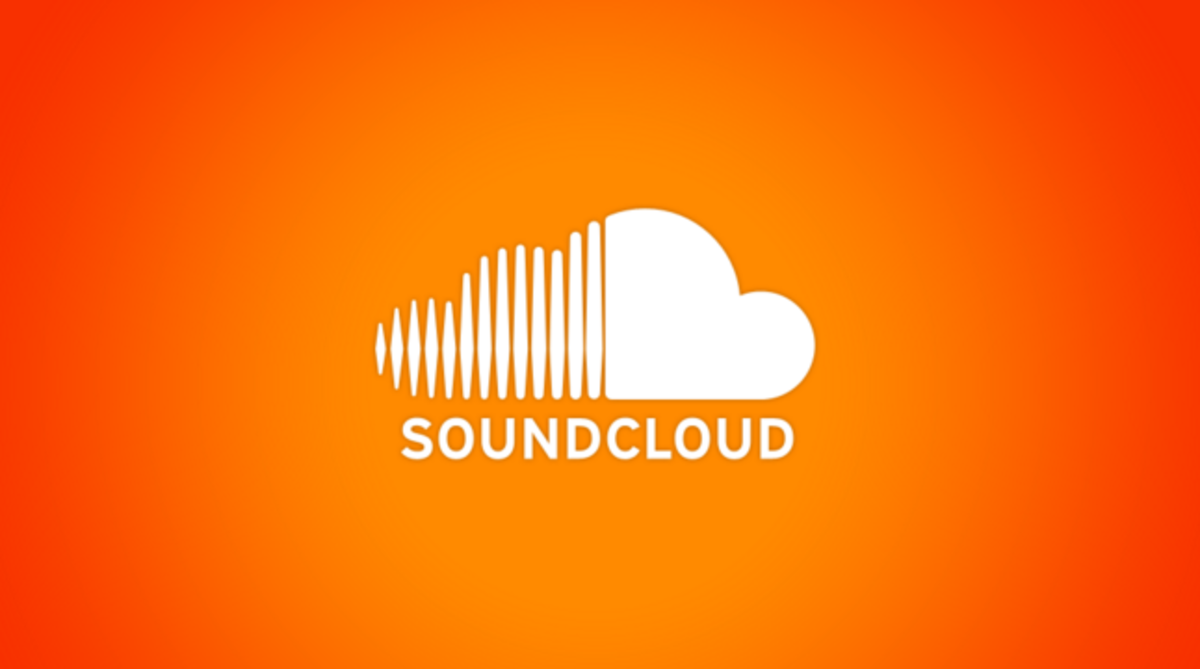
SoundCloud Explained
Online streaming services are not something new to the music world. There are various ways to stream audio and music online, and one such streaming platform is SoundCloud.
SoundCloud was founded in Berlin in 2007 and has ever since outspread to an extensive app that includes a streaming service, a distribution platform and an online community. For musicians, it’s a remarkable platform to upload original music to share with their followers and for the followers, it’s simple to keep track of their favorite artists and stream on repeated play. Thus, SoundCloud offers a remarkable platform to stream audio for news and sports media markets.
What is SoundCloud?
SoundCloud, an online streaming service for music and audio is termed as the world’s largest music and audio streaming platform ever since it started in 2008. However, SoundCloud offers various functions based on the kind of users such as it acts as a bin for music and audio, serves as a podcast by uploading favorite audio, and links the followers with their favorite artists directly. The followers can also post feedback and reviews for their desired artists.
- SoundCloud elites on its open platform, where simple music streaming and audio storage services have extremely complex usage agreements. SoundCloud intends to make easy access to Streaming and sharing of music/audio.
- SoundCloud is very much similar to YouTube (without video, though), in which anyone can upload content which when made public is easily accessible by any user who visits the site.
- SoundCloud gives a choice for different subscriptions such as –
- A free account – User is limited to 120 minutes of uploaded audio and view only a few stats.
- Pro/Pro Unlimited – User gets more upload hours, open stats, and a Quiet Mode feature which helps to hide comments and stats on the tracks.
- SoundCloud is found on different platforms – Online, iOS, Android, Window 10 (beta), Xbox One, and Sonos
Features of SoundCloud
After knowing the basic concept of SoundCloud, let’s look into its features. Thus, if you are a music startup and wish to create a successful music streaming platform such as SoundCloud, note the below-listed features –
- Allows the users to search music catalogue by category
- Offers personalized playlist
- Offers access to millions of songs, both online and offline
- Merges social media and helps to connects with friends
Even without the login or account creation, users can look for their desired music tracks, favorite artists, a podcast and much more in the SoundCloud app. This offers a list of search results from which the users can select and start listening. The user can also search in the SoundCloud Top 50 list for the most popular music on the app.
Signing up on the SoundCloud can be done either using a Facebook account, Google account, or an email address. Once the Signing Up process is completed, the user gets complete access to the SoundCloud app.
Conclusion
Wrapping up! Thanks to the SoundCloud platform which helps to improve your personal or corporate brand and make it reach as many people as possible who may be interested in this type of content.
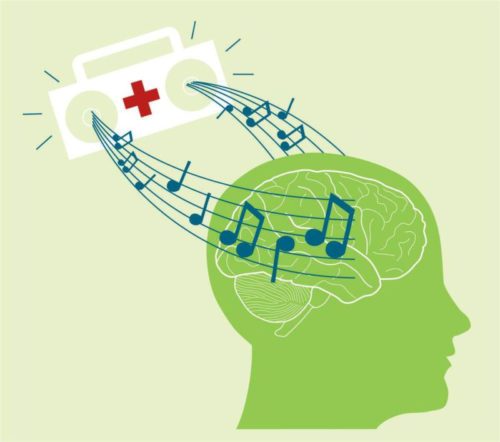
Beat Depression with Music
If you have depressive symptoms and want to treat it naturally, using music therapy may be a good way to relieve the symptoms. While many people are familiar with the idea that listening to music can enhance their mood, recent research shows that music can be therapeutic and can help treat depression. Music therapy involves working with a music therapist and making music, improvising and listening to music, as well as traditional conversation therapy. Playing and listening to music in a therapeutic environment alone can help you to improve your mood and relieve the symptoms of depression.
Use live or played music sounds to treat depression
Create meaning through music. Usually, people reporting symptoms of depression are deprived of their desire or lack of interest in activities and/or loss of meaning. The act of music making allows you to take risks and to experience yourself in a different way and to be supported in a therapeutic context. Especially when you have difficulty expressing yourself in a different way, you can feel emotions while playing.
Let the music you create have meaning for you. You can create a song specifically about the sadness you feel about losing a beloved pet, the struggle you make after a career change, the desire to leave something valuable for you. Let these emotions and experiences guide your music as you play.
Interact with other people and yourself in a different way. If you devote yourself to music, allow yourself to refer to it in a different way. Instead of words, use emotion, tone, rhythm, and collaboration. Through interaction and participation through music, you can express yourself when words are hard to find, but emotions are not. Working with a music therapist can help you interact more deeply with your emotions and work in a supportive environment.
See how you feel when playing music. Do you feel present, focused on the moment, the music and the feeling? These can be healing factors for depression. So often we take in music at a passive level. We listen to music passively while we are working. We nod our head to a song while we are driving. Music might be in the background of love making or just while we are scrolling through a sex app. The point here is to take it in actively rather than passively and really be present.
Explore the vibration treatment. Music can be described as a sound that can be further reduced to vibrations. The vibration therapy (called Vibroacoustic therapy) uses weak vibrations that can be heard and felt and applied to the body. Vibroacoustic therapy works with the body in a way that makes the emotions and the bodywork more harmoniously by stimulating the different parts of the body by vibration. While they continue to gain momentum as a therapeutic option for depression, some studies have found positive responses to Vibroacoustic therapy as a therapeutic approach to depression.
Vibroacoustic therapy also helps relieve chronic pain (such as fibromyalgia) by relieving pain, increasing movement, and reducing the dose of medication. If you are working with a music therapist, ask if you want to play with the vibration through the percussion. Ask if Vibroacoustic therapy is available.
Get in touch with the movement. While many people know that exercise is a useful way to treat depression, it can even be helpful to make movements and experience oneself as a physical being to treat depression.
The beat of a guitar, the beating of a drum, or the movement of a bow on a violin can trigger movements that can contribute to the positive treatment of depression. The human body often responds to music by touching, nodding or clapping. Music helps you connect with your body and move naturally.
To Sing. It does not matter if you consider yourself a “good” singer, singing can help you to improve your mood and your thoughts and promote relaxation. Sing songs that you know and that are good for you. See how you feel after a few minutes of singing; have you changed your moods or thoughts?
Sing in the shower, in the car and in your house. Sing to your children, your pets or your garden. Do not be shy when singing; remember that it is good for you! Create a playlist that accompanies when you feel stressed or depressed. Sing and measure how you feel afterwards. If you work with a music therapist, ask to record songs with musical instruments. Even if you sing nonsensical words, it’s okay to just use your voice.
Learn an Instrument. If you do not know how to play an instrument, take one. After all, playing an instrument plays more parts of the brain than any other known activity. Take a few minutes each day to play the instrument and see what it feels like. Choose an instrument that gives pleasure; It can be as complex as a trumpet or as simple as a rattle.
Do not be too ambitious to choose a new tool. And it should be fun; it was not a difficult or frustrating experience. After all, it is not “work” an instrument, but a “touch”.
Of course depression is a complicated thing to deal with and I’m not saying just play some cool music and you won’t be depressed anymore. However, music is a proven tool that can be used as part of any approach for treating and dealing with depression. Studies upon studies have shown the impact that music can have on our brains. If you or someone you know has struggled or currently struggles with depression, I would encourage you to delve deeper into just how powerful music can be in the fight.
One Of My Favorite Tools-MASCHINE
Beast Mode On MASCHINE
This is a video of Jeremy Ellis doing his thing on MASCHINE. It is a brief showcase of what this amazing tool can do in a live setting. I use this tool for so many different things and it has become a staple of my music making process.
Walk Before You Run – Getting Started Is Easier Than You Might Think
This is a great video showing how simple MASCHINE can do what you want. I use it to chop up samples and my process from when I got my start on the tool hasn’t changed that much. The software is very user friendly and allows the physical tool to interface so seamlessly with my computer. I would encourage anyone looking to add an invaluable piece to their studio to check out Native Instruments.

How Did The Internet Get Started
A short history of the internet
The Internet has been the main source in various fields, such as education, science, research and others, to develop, design and do many other things. It is a physical entity that depends on the physical infrastructure to connect a network to other networks. Internet concept first coined in 1962 through the network of J C R Licklider was first used as a galactic network called to connect a group of computers to access data and programs. Since then, the DARPA concept has begun to exist, and finally ARPANET, where the first host computer was connected. ARPANET was previously used as the network technology for the first e-mail messaging service. Finally, ARPANET has become the Internet that works with its network architecture in multiple independent networks. The packet switching method has also been introduced between networks that facilitate data communication from one location to another.
On October 24, 1995, the FNC passed a resolution proposing the term Internet with multiple members of the Internet and intellectual property communities. The approved resolution states that the Internet is a global information system that is logically linked by a single global address space based on IP or Internet Protocol, and supports communication over TCP or Transmission Control Protocol. It also specifies that users should have access to all services privately or publicly for communication. Since then, the network concept has changed with great evolution and technology. There were a point-to-point model, client/server and more with which you can connect personal computers to a network. Physical cables, telephone cables, network devices, LANs, WANs, and many others have also been created for the next generation of distributed worldwide networks. There are several types of connections such as cable, wireless, 2G, 3G and 4G, which generally increase the capacity of the network.
Internet Timeline
The Timeline of the Internet shows milestones, results, and great advances in Internet development in this computer world.
1962
It was in 1962 when J.C.R Licklider coined the concept of an intergalactic computer network on the network after the ARPA (Advanced Research Project Agency) was created by the US government and Leonard Kleinrock introduced the packet transmission.
1964-1967
A typical packet-switched network was created by Donald Watts Davies at the National Physical Laboratory in the UK and revolutionized data communication in various fields. In addition, the concept of message blocks in data communication has been approved by Paul Baran of Rand Corporation, USA. UU.
1965
It was the year in which created the first WAN or Wide Area Network that connects computer between the TX-2 computer in Massachusetts and the Q-32 in California computer through a long line. The term packet switching also exists for better data communication.
1969
Finally, after all the proposals, funds, projects and the first change of paper packages, the proposal ARPAnet structure was written to design the structure of the network. The IMP message processor (Physical Interface) is designed to connect to four different universities, and data packets are sent between computers on the network. The first attempt was unsuccessful with the letter G of access. But on the second try, there was a positive answer.
1972
After implementing Internet protocols and creating the first IP connectivity, the IMP network with 23 hosts is rapidly increasing. In the end, e-mail was presented by Ray Tomlinson, who can send messages over distributed networks. The package change was made by connecting 20 different computers, and the first Internet address register was created.
1973
Now it is the age when the first TCP/IP and Ethernet protocol was invented, connecting different computer networks to communicate with each other. TCP allows users to access a remote computer and download files.
1982
The first internet connection was made in Asia by Kilnam Chon, known as SDN and later the Internet.
1983
The first DNS or domain name system was initiated with network addresses to recognize an organization from .com, .edu, .org, etc.
1984
The first UNIX system was developed in Japan and the foremost e-mail was received in Germany.
1988
The first Internet Exchange Point was established by connecting the TCP/IP networks and the first commercial and non-commercial Internet networks. It was also the year in which Daniel Karrenberg founded the first ISP or Internet Service Provider.
1989
It’s the moment when the Internet is growing all over the world and Dr Stephen Goldstein plays an important role in the evaluation and funding of Internet development. So it helps to connect about 25 countries with NSFNET. Thus, the first WWW or World Wide Web was created by Berners-Lee and a first web browser application for Mac operating system.
1991
This year, the World Wide Web is available for public use through the Internet, which contains much information in various areas.
1992
The first person to surf the Internet was used by Jean Armor Polly and Internet surfing was done by Brendan Kehoe in a USENET publication. It’s also the moment when audio and video multicasting begins to exist.
1994
The first website was launched by the White House WWW.Whitehouse.gov and then many other commercial sites were launched.
1998
Google opened its first office in California and introduced web publishing tools
1999
There are browsers in which Netscape and Microsoft share almost 100% of the market. Napster was introduced to the rights of music.
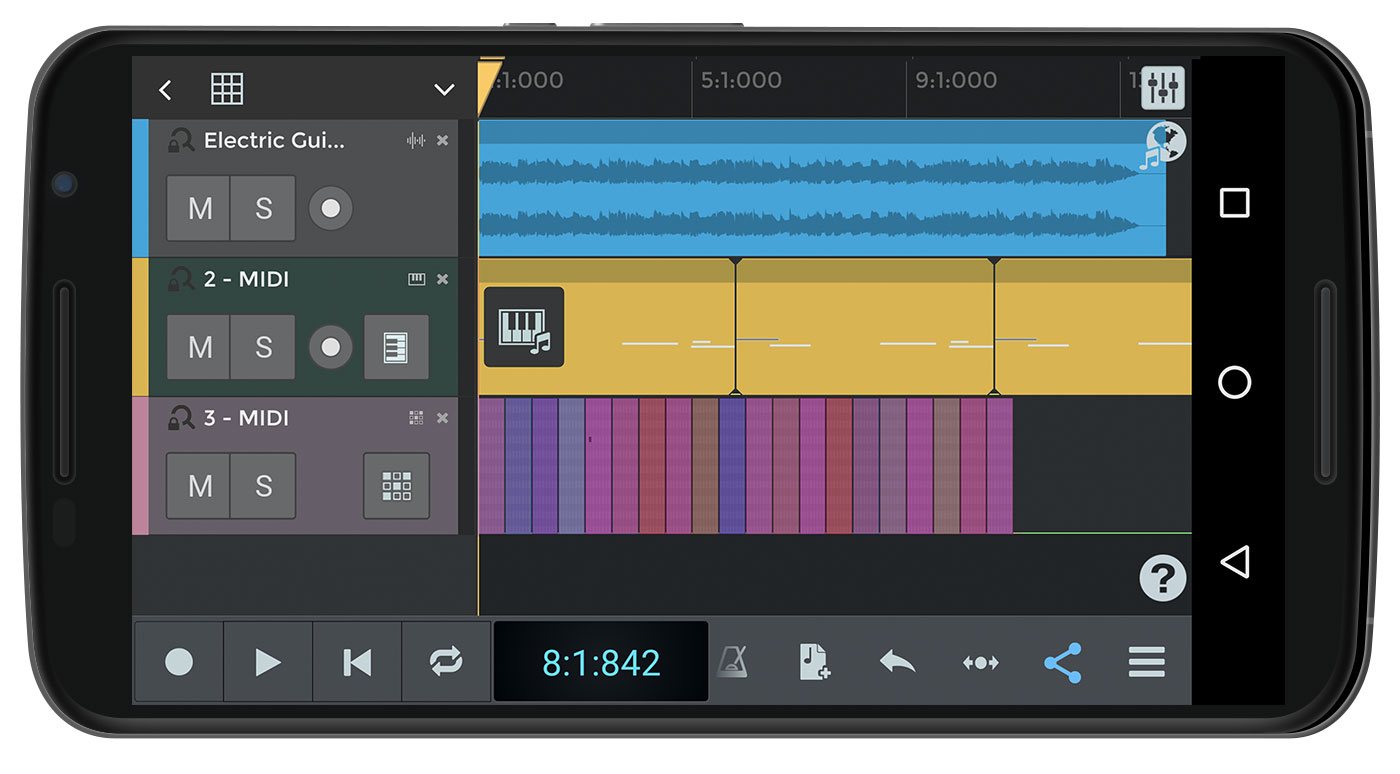
Music Recording Apps For your phone
The ability to record audio anytime is a useful, though often forgotten feature of modern smartphones. Like many Android phones, iPhones have an installed voice recorder. A variety of free registration applications are available that offer more features. You can use these audio recording applications to record your thoughts, class hours, concerts, meetings, and more.
Method 1: for iPhone
- Open the application Voice Memos. This application lets you record audio on your iPhone. It can be in a folder called Utilities or Extra.
- Touch the red button to start a fresh recording. Your iPhone will straight away start recording audio from your phone’s mic.
- To get the finest sound for the recording, place the bottom of the iPhone in the audio source. Here is the microphone positioned. Make sure your hands do not cover the iPhone microphone. Be sure to keep a certain distance between you and the source to get the best levels.
- Tap the Stop button if you want to stop recording. You can continue recording by touching the record button another time. You can move the timeline to specify where you wish to start recording again.
- Tap the label “New Recording” to edit the audio recording file. A keyboard and text box will emerge permitting you to rename the recording file name.
- Play the recording by touching “Play”. This allows you to hear the recording before saving. You can move the timeline to specify where you want to start playback.
- Touch the Edit button to cut the clip. The Edit button appears as a blue box with lines that come from two corners and are to the right of the recording file name.
- Touch and drag the selection levers to highlight the part of the recording you want to delete. Tap the “Delete” button to remove the selection or the Trim button to remove everything else.
- Tap Done when you are satisfied with the recording. If you did not name the recording before, you will be asked to name it.
- Listen to your recordings. Your recordings are listed in the voice memos application. Touch one to access the playback controls. You can also touch the Share button which enables you to send the recorded file to others, the Edit button to cut the clip, or the Trashcan to remove it.
- Use another application to record the audio. In the iPhone App Store, there are numerous recorders that have more features or that can be better adapted to your needs. Open the App Store and look for “voice recorder” for an extensive list of audio recording applications. Be sure to read the comments to see if any of the applications work for you.
Method 2: for Android phone
- Search for a voice recorder application on your device. Each Android device is diverse and distinct operators load different applications while recording. Because of this, there is no standard feature for Android like iOS. Your device may already have an application installed or you may need to download an application yourself.
- If you cannot come across a voice recorder application on your device, you can promptly install it from the Google Play Store. Many recorder applications available here are free.
- Visit the Google Play Store and look for “voice recording app”.
- Glance through the list of outcomes to locate an application that matches your requirements. There are plenty of audio recording applications available, some of them are free and others are available for purchase. Explore the star ratings for a quick idea of how well-liked the apps are. Tap an app to see details like user ratings and screenshots.
- Touch the “Install” button once you have found the application you want to test. If the application costs money, you must tap and pay the price before you can press Install.
- Start your voice recording application. Once you’ve downloaded or found an application on your device, find it in the application bar and touch to open it. The application bar can be open by beating the grid button at the base of the main screen. The recording interface will vary for each application, so the remaining section is just a common guide.
- Touch the Record button to start a new recording. When you start your new recorder application, you will usually be directed to the New Recording screen or somewhat similar. The application can first open a list of existing recordings.
- Point the bottom of the Android phone to the audio source. Most Android devices have the microphone on the bottom. Make sure your hands do not cover the microphone during recording.
- Touch the Pause button to stop recording. In general, it is possible to pause the recording without stopping it, allowing you to continue recording.
- Touch the Stop button to stop recording. This usually saves the recording on your device, but it depends on the application you are using.
- Most recording applications include basic editing features that allow you to cut pointless parts. The Edit button is normally displayed after the recording has been completed.
- Tap the Share button to send the music recording to your friends or family via one of your messaging applications. Most recorders record in MP3 or WAV composition, which can be played on nearly any device.
Of course these recordings are not going to be studio quality, but you would be surprised how valuable they can be. It is a great way to record natural sounds that can be implemented in the studio to give a really cool and unique quality to a production. Use a recording to get creative with your newest fling. It’s played out to send nudes to a fuck buddy, instead use that sexy creativity and create something that can turn on your hook up in a unique way. Who could forget the 90’s era phone recordings that were a staple in hip hop and r&b albums? Next time your friend is going on a rant about something capture it and tweak it in the studio to creatively immortalize, honor, and maybe embarass them through a song. The key here is to remember that tools are around us all the time and we should not underestimate their capabilities.

